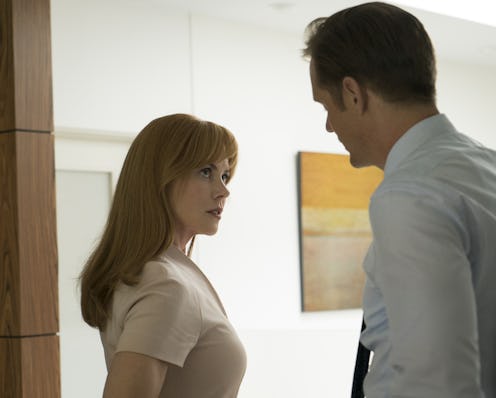Books
What I Learned Re-Reading 'Big Little Lies' After #MeToo

If you don’t know by now, Big Little Lies, author Liane Moriarty’s gut-grinding novel about wealth, motherhood, and domestic violence, was first published in 2014. The HBO adaptation — if you missed it, starring Nicole Kidman, Reece Witherspoon, Shailene Woodley, and Zoë Kravitz — aired in February of 2017, diverting little from the plot of the novel. Just months later, in October of 2017, the #MeToo movement, originally started by Tarana Burke in 2006, went viral in a big way. Suddenly, the bestselling novel that offered readers a heady twist on the typical tropes of domestic thrillers had become notably more relevant, resonant, and urgent.
It’s no secret that the rise of #MeToo made a lot of different people rethink a lot of different things — from the boardroom to the bedroom, people were forced to reevaluate the ways we interact with one another and refuse to see one another. For a book-lover like myself, this renegotiating of long-ignored gender norms meant that the way I read certain kinds of books (namely, but not singularly, domestic thrillers) changed as well. Novels like Big Little Lies began to take on the significance they’d always had, but that had been all too easy for me to ignore. Domestic thrillers went from heart-pounding beach-bag must-haves to intense wake-up calls to my own blindness, tolerance of the intolerable, and socialized silence.
Rereading Big Little Lies after #MeToo change the novel for me entirely — highlighting what once seemed anecdotal as systemic, showcasing the unique weight women carry as we walk through the world. Here are 5 ways Big Little Lies speaks to #MeToo:
It demonstrates how early gender norms are socialized.
Readers first encounter the violence of Big Little Lies in a kindergarten classroom full of five-year-olds. When a student named Amabella is found with bruises around her neck, she is further revictimized by being asked to name her attacker and describe what happened in front of an entire class of her peers, her attacker, and their parents. The burden of justice, in other words, is placed almost entirely on Amabella — a child who readers learn later has been threatened into silence. She learns, quickly, that silence is often the safer option. Sure, playground bullying may be categorically different than rape, but the fact that these dynamics can and do manifest as early as kindergarten should be disturbing to all readers.
It highlights generational misogyny.
Anyone who knows anything at all about child psychology won’t be shocked to learn who Amabella’s attacker turns out to be — a young boy, the son of Jane Chapman, played by Shailene Woodley in the show.
What should be intensely concerning is the way Big Little Lies demonstrates that as much as compliance and silence is modeled to young girls, power and aggression is modeled to young boys. Gender norms are systemic and programmed into most of us from a very young age. It’s only by breaking that cycle of patterning that a more egalitarian system will emerge.
It calls attention to the unique burdens placed on women.
It’s no secret that women, real and fictional, bear the brunt of childcare, even when they themselves have careers and are household income earners, even in 2019. What that means in Big Little Lies is that the mothers, in various ways, are solely responsible for the poor behavior of their children—and are solely responsible for compensating for those areas where the male role models in their children’s lives are poor ones or absent altogether. In Jane’s infuriatingly particular case, this means that she bears the burden of fearing her son is genetically predisposed to being a rapist, and finding a way to override those genes — even as she’s coping with being a victim of rape herself.
It explores the problem of women victimizing other women.
The boys and men definitely aren’t the only bad guys in Big Little Lies. The novel also showcases how women can, unfortunately, be each other’s worst enemies. From petty playground drama, to competitive mothering, to actually refusing to see the suffering of one another, the women in Big Little Lies are acting out a classic pedagogy of the oppressed — wherein the oppressed become the oppressors, if only to elevate themselves above somebody else, no matter the cost.
It gives voice to the psychology of victimhood and survival.
From bargaining, to rationalizing, to night terrors, the two characters who fall victim to the most violence in this novel — Celeste Wright, played by Nicole Kidman in the show, and Jane — are painful examples of the psychological journey women go through when faced with assault, rape, and domestic abuse. For Celeste, this means bargaining: She succumbs to a hierarchy of suffering wherein she compares her own situation against other worst-case-scenarios, or justifies the rage she endures by imagining ways she might have contributed to it or "brought it on herself." Jane, on the other hand, directs her suffering inward by over-exercising and under-eating, and tells a story about the conception of her son that negates her truth entirely. Both women deal as best they can — and it remains to be seen how season two of the HBO series will handle their continued journey.
This article was originally published on